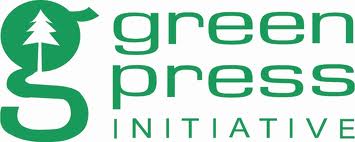Libraries: Saving the World One Book at a Time
Support your local library and save a tree by borrowing a book here and there (sorry authors). April is a busy month for libraries, so be sure to stop by yours to celebrate all of the wonderful events below.
School Library Month (April)
International Children’s Book Day (April 2)
National D.E.A.R. (Drop Everything And Read) Day (April 12)
National Library Week (April 14 – 20)
And be sure to check in with your local library for information on Earth Day celebrations and recommended reading lists for environment junkies. Check out a list complied by the Florida Department of Education for great eco books for all ages: http://www.justreadflorida.com/earthday.asp
Feature
Ebooks, Eco-Friendly Printing, and the Environment
Exploring the Importance of Earth Day with Independent Publisher
As authors, publishers, and readers, we constantly champion the values of books: education, entertainment, escape, exercise (of the imagination…). But ever since the advent of the printing press, one rather detrimental issue has been linked to the book business: paper. Paper, and in turn printing, have long complicated and challenged the mission of the written word.
I’ll admit to being a staunch supporter of the physical print book. Nothing beats the texture of the pages, the crisp smell of ink, and the tactile experience of holding a book and turning the pages as you go. Clicking a button or swiping a finger just doesn’t give you the same sense of satisfaction. But even I have been appalled and frustrated by the way our “go green” society still works when it comes to paper and printing.
According to the Green Press Initiative, a group that has been working to mitigate the environmental impact of book publishing, printing all of our books accounts for 5 to 7 percent of the worldwide paper market. One million tons of paper, made from more than 30 million trees, are used by U.S. book publishers every year. (If it makes you feel any better, the newspaper industry is responsible for about 67 million trees.) Paper mills and factories are the third largest industrial polluters in the country, and are responsible for water, air, and land pollution. And then there’s that itty bitty little problem called deforestation.
Okay, paper rant aside, what does it mean to be an eco-friendly publisher or author? Ebooks are an obvious choice (and I’ll get to that in a little bit), but how else can you do your part? Check out the Tools and Resources section of the Green Press Initiative’s site to find high quality recycled paper suppliers, toolkits to help your company develop and environmental policy, and more. You can also look into sites such as Green Printer, Barefoot Press, Book Printing Revolution, and more. Other ways to help your company go green are to lower print runs (which can also help with returns and warehouse stock), and, of course, turning digital.

But even ebooks aren’t as simple as we once thought. Some studies have shown that the carbon footprint of the iPad (and other ereaders) can exceed that of a book. The energy and materials needed to create an ereader plus the energy needed to run it can end up being greater than the carbon emissions need to print, ship, and sell a print book. To learn more about this ongoing debate, visit EcoLibris.net.
Of course, publishers and authors are the producers of content, not the producers of iPads. So for a publishing house, going digital can mean cutting down on paper, printing, shipping, warehouse costs, and returns. As we’ve all learned, ebooks are not “free” when it comes to production, but they can be a good deal cheaper than producing print books.
Many readers and even some authors think ebooks are cheap as can be (check out this Digital Book World article), but they don’t take into account all of the costs that stay fixed no matter the platform. These include all of the editing and design costs, author advances, staff paychecks, marketing, PR, and more. Publishers really save money when it comes to producing the book, and even that isn’t free. Some houses choose to outsource their conversions, while others go digital in house. Either way, the costs of energy and human effort are still involved. According to Molly Barton, Global Digital Director at Penguin, producing an ebook costs only about ten percent less than producing a print book.
Ten percent isn’t a whole lot in terms of savings, but it can mean so much more in for the environment. Fewer print books means less paper being used and fewer trees being cut down. It means less ink, less shipping, and lower storage costs. I never want to see our bookstores and libraries disappear, but I wouldn’t mind bidding adieu to giant warehouses and wasteful paper mills. Everything in moderation, right?
So this month, take a moment to think about the environment. Whether you’re an author, publisher, printer, or just reader, think of ways you can improve your habits or policies to help publishing get “greener.” You can also donate to Authors for Earth Day, an organization that strives for “supporting conservation through literacy.” So celebrate Earth Day (April 22), plant a tree on Arbor Day (April 26), and enjoy the long awaited coming of spring.

* * * * *

Jillian Bergsma Manning is a contributing editor for Independent Publisher. She graduated from the University of Michigan with a degree in English. She welcomes any questions or comments on her articles at jbergsma (at) bookpublishing.com. Follow her at @LillianJaine.

